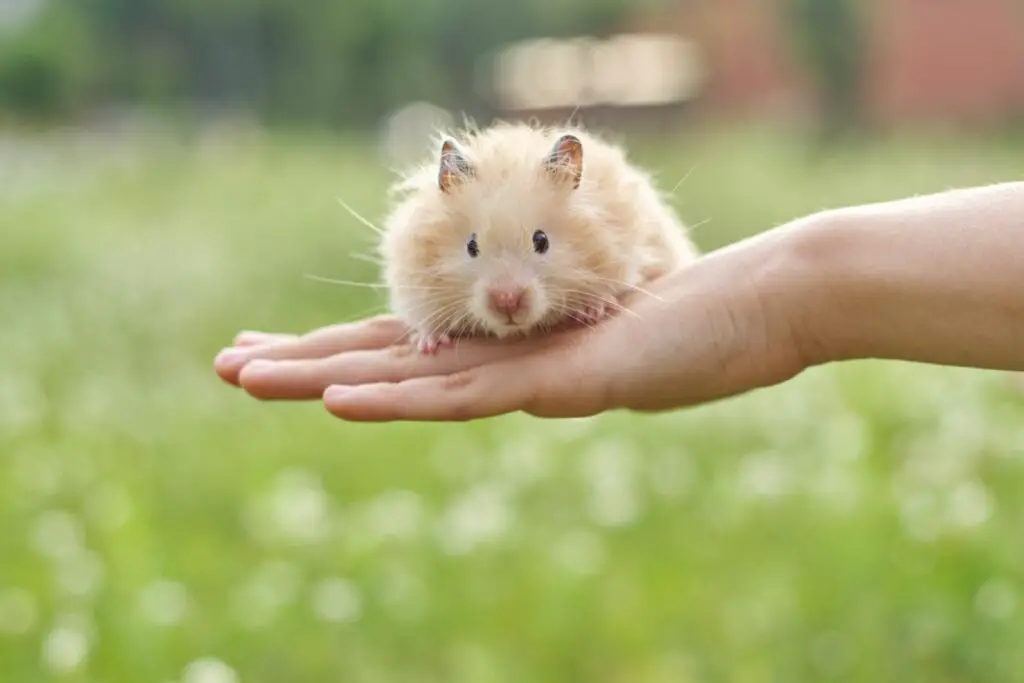Hamsters are cute, furry, and lovable pets that can bring joy to anyone’s life. However, they are also highly communicative animals that use a variety of sounds to express themselves.
I have seen many pet owners who are unaware of the meaning behind the sounds their hamsters make. Therefore, in this blog post, I will explore the different sounds that hamsters can make and their meanings.

Explanation of Why Hamsters Make Sounds
Hamsters are social creatures that use sounds to communicate with their owners and other hamsters. They have a keen sense of hearing, and they can detect even the slightest sounds in their surroundings. Hamsters make a variety of sounds to express their emotions, needs, and to warn of danger.
Importance of Understanding Hamster Sounds
Understanding hamster sounds can help owners to identify any health issues or problems with their pets. It can also help owners to understand their hamsters’ emotional states, which can help them to provide better care and reduce stress for their pets. By learning to interpret hamster sounds, owners can also strengthen their bond with their pets and provide a more enriching environment for them.
Types of Sounds Hamsters Make
Vocal Sounds
Hamsters make a variety of vocal sounds, such as chirping, squeaking, squealing, and chattering. These sounds can indicate a range of emotions, including distress, fear, contentment, and pleasure.
Non-Vocal Sounds
In addition to vocal sounds, hamsters also make non-vocal sounds, such as scratching and gnawing. These sounds can also indicate their emotional state and needs.
What Do Hamster Sounds Mean?
Distress or Pain
When a hamster is in distress or experiencing pain, it may make high-pitched squealing or chirping sounds. These sounds may be accompanied by other symptoms, such as lethargy or loss of appetite. If you notice your hamster making these sounds, it’s essential to seek veterinary care immediately.
Fear or Anxiety
If your hamster is feeling afraid or anxious, it may make a low-pitched squeaking or chirping sound. It may also puff up its fur or cower in its cage. These signs indicate that your hamster is feeling threatened and needs to be removed from the stressful situation.
Communication with Other Hamsters
Dwarf hamsters can be kept in pairs or small groups and can use sound to communicate with one another. If you have more than one hamster, you may hear them making soft chirping or squeaking sounds to greet each other or establish dominance.
Warning or Aggression
If your hamster feels threatened or is trying to establish dominance, it may make aggressive sounds such as hissing, growling, or teeth chattering. These sounds indicate that you should avoid handling your hamster until it calms down.
Contentment or Pleasure
When a hamster is happy and content, it may make soft chirping or purring sounds. It may also engage in playful behavior, such as running on its wheel or playing with toys.
How to Interpret Hamster Sounds
Recognizing the Tone and Pitch of Vocal Sounds
When interpreting hamster sounds, it’s essential to pay attention to the tone and pitch of their vocalizations. High-pitched sounds typically indicate distress or pain, while low-pitched sounds indicate fear or anxiety.
Observing Body Language and Activity During Sound-Making
In addition to vocalizations, hamsters also use body language to communicate their emotions. Pay attention to your hamster’s posture, facial expressions, and activity during sound-making to get a better understanding of its emotional state.
Understanding Context and Timing of Sounds
The context and timing of hamster sounds can also provide valuable insights into their emotional state. For example, if your hamster makes aggressive sounds when you approach its cage, it may be feeling threatened, and you should avoid handling it.
Common Hamster Sounds and Their Interpretation
Chirping
Hamsters make chirping sounds when they are happy, content, or greeting other hamsters.
Squeaking and Squealing
Squeaking and squealing sounds can indicate pain, distress, or fear.
Screaming
Hamsters scream when they’re in extreme distress.
Teeth Chattering
Teeth chattering is an aggressive sound that hamsters make when they feel threatened or are trying to establish dominance.
Scratching
Scratching sounds can indicate that your hamster is digging, burrowing, or grooming.
Conclusion
Understanding hamster sounds is essential for their health and wellbeing. By paying attention to the sounds your hamster makes and observing their body language and activity, you can provide better care and reduce stress for your pet.
I encourage all hamster owners to take the time to learn about their pets’ sounds and use this knowledge to strengthen their bond with their pets.
- How Long Do American Eskimo Dogs Live? Important Factors and Care Tips - September 29, 2023
- Do American Bulldogs Need Grooming? Essential Tips and Care Guidelines - September 29, 2023
- Do Bengal Cats Enjoy Playing? Essential Tips for Keeping Them Active - September 29, 2023